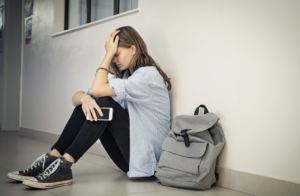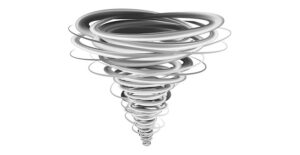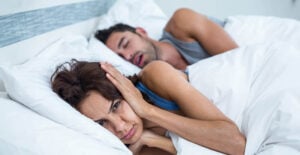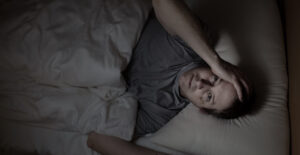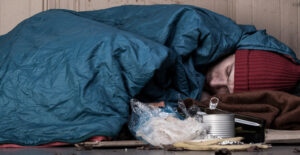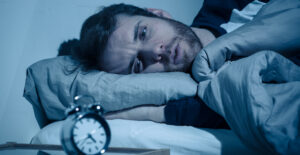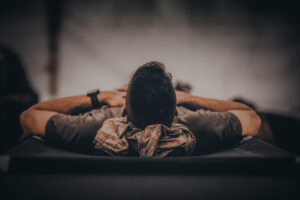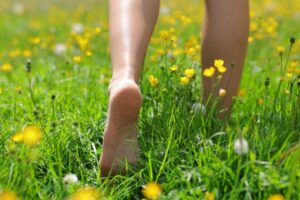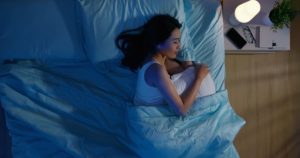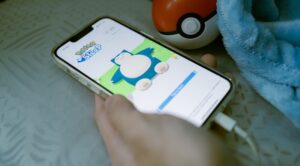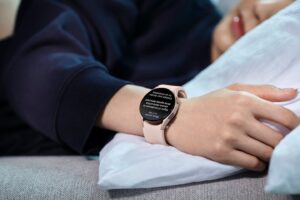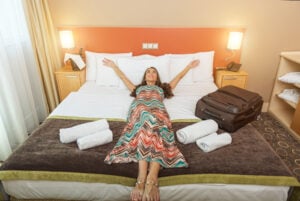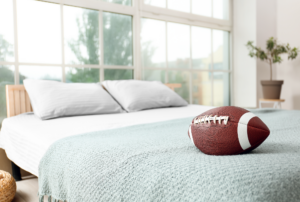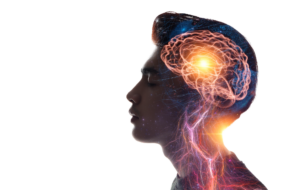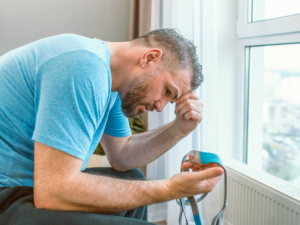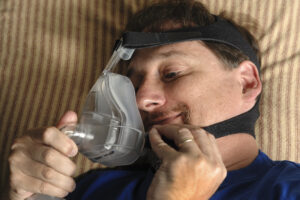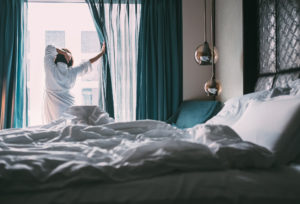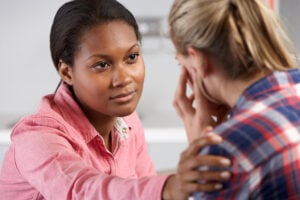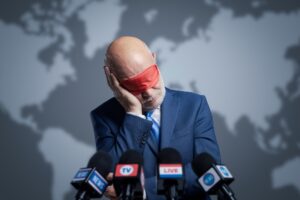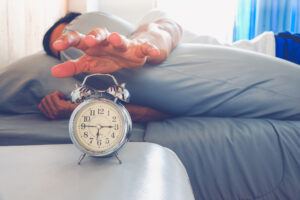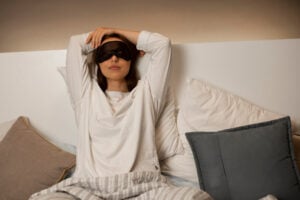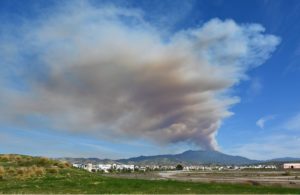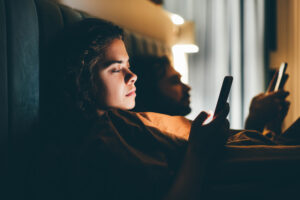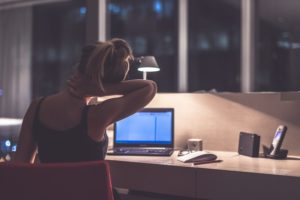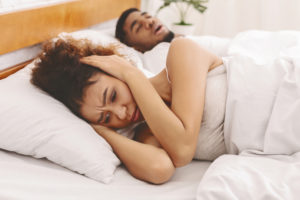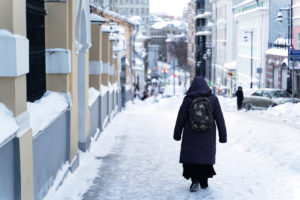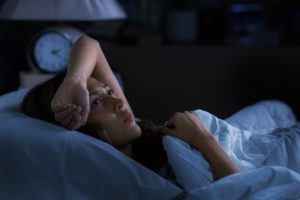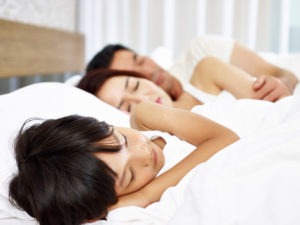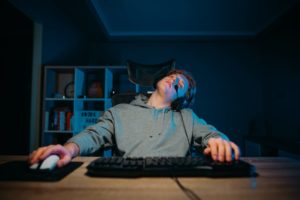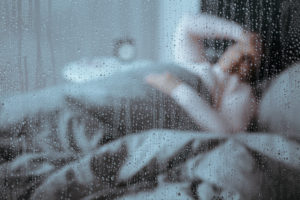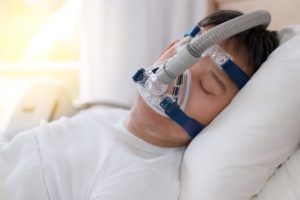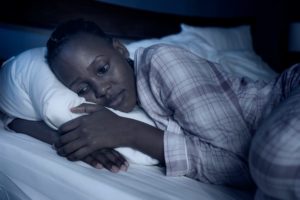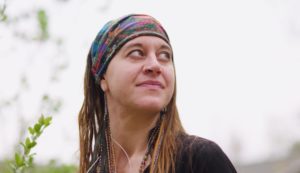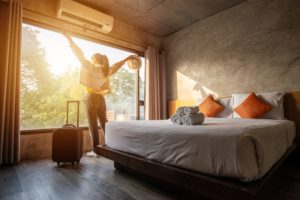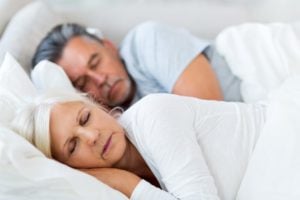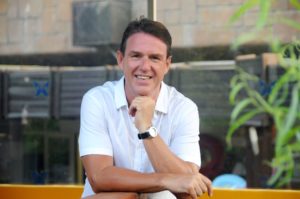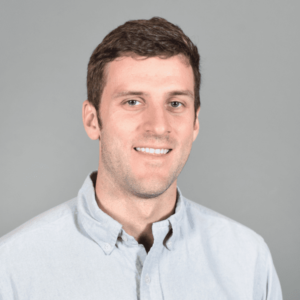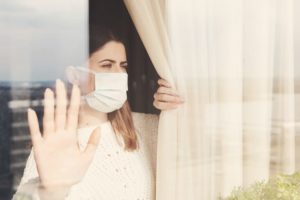Say We Abolished Daylight Saving Time. Here’s How It Would Change Sleep.
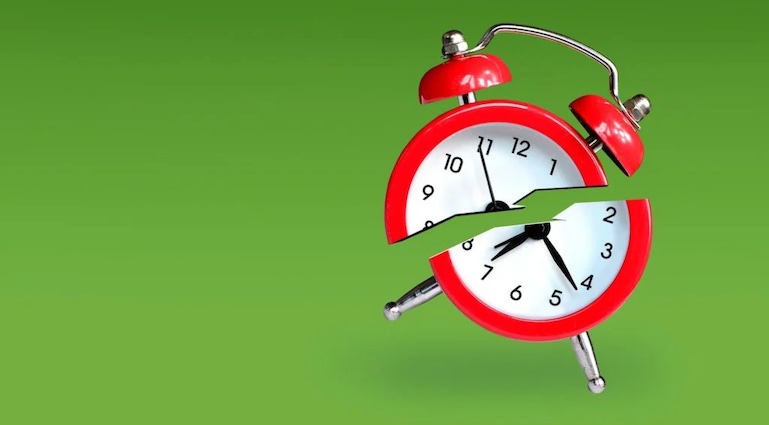
Picture this:
It’s Saturday night on the second weekend in March or the first weekend in November. You’re enjoying your evening, winding down for the night, and tucking into bed. You wake up on Sunday at your usual time, just like the weekend before, without having to remember to change a single clock or worry about whether you accounted for the time change in your schedule.
Sounds too good to be true, right? Well, that’s just scratching the surface of how things might change if daylight saving time (DST) were abolished.
Daylight saving time begins in early March and ends the first weekend in November (in 2024, that’s Sunday, November 3). After another year of switching our clocks back and forth, we got to thinking: What would a country without daylight saving time look like? Would we sleep better?
According to sleep experts and others who’ve explored problems arising from twice-yearly clock changes, abolishing daylight saving time might not just be about getting rid of minor annoyances. It could change how our bodies interpret and adjust to light.
Without having to switch between standard time and DST, we also could stop worrying about losing an hour of sleep, feeling tired after “springing forward,” or remembering to change the time on our watches and clocks. So maybe we stop just wondering and take a closer look at what it might be like without daylight saving time.
The End of ‘Spring Forward’ and ‘Fall Back’
Daylight saving time started in the early 1900s and has been mandated in the U.S. since 1966, with only Arizona (except the Navajo Nation territory), Hawaii, and a number of U.S. territories not observing it .
So we’re used to it. But we can envision what life would be like without it.
Recent surveys have found that than 60% of Americans support abolishing twice-annual clock changes . In fact, more than 30 states have introduced bills to replace daylight saving time with one stable time, with more than 15 passing legislation stating they’d change if allowed to by federal law . The issue has also been the subject of legislation in the U.S. Congress . For more on this, read the companion article, Latest Updates: Daylight Saving Time in 2024.
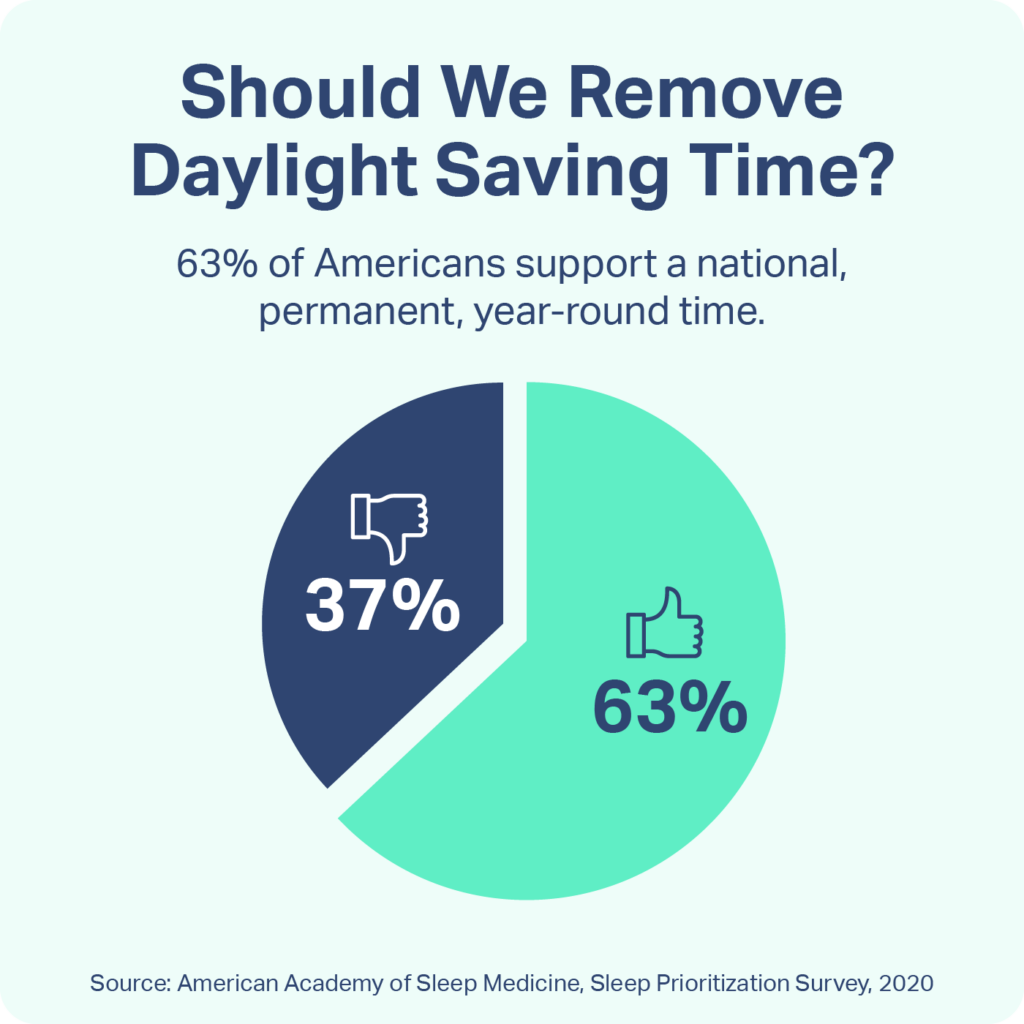
If clock changes were abolished, what would happen first? We’d reduce schedule disruptions and wouldn’t have to remember which clocks auto-update. Without losing an hour of sleep in March, you’d probably wake up feeling more refreshed and less tired than on that same weekend in past years.
“That missing hour of sleep can have a major impact on your alertness, mood, performance, health, and safety,” says Kimberly A. Honn, Ph.D., assistant professor at Washington State University Spokane in the Sleep and Performance Research Center.
Without feeling the effects of sleep loss, you can get up Sunday morning ready to take on the world.
The benefits don’t stop on Sunday, either. It’s typical to sleep 40 minutes less than usual on the Monday after the switch to daylight saving time, which a DST-free world might resolve. It also would remove the need to establish a new sleep pattern after a clock change.
“It can take a week or longer for the biological clock to adjust to the new time,” says Honn, who adds that all the while, your “sleep debt stays with you.” During that time, you may face an increased risk of heart attack, stroke, and injuries in the workplace or on the road .
When you go to work on Monday, you also might find an improvement in how much you can accomplish. Without sleep debt, you may have less brain fog and be more productive . Your co-workers may feel the same.
But work disruptions from clock changes occur for reasons other than just sleep loss. If daylight saving time were abolished nationwide, it would eliminate the inconsistencies in timing tied to the fact that not all U.S. states and other countries implement DST.
At work and in school, we’d eliminate the problem of people forgetting about the time change. Software developers may be freed from DST-related bugs in their code — “a big issue,” says Jay Pea, founder and president of the nonprofit Save Standard Time.

But what about in November, on the weekend when we usually “fall back” and gain an hour? While some people might miss having extra time added to their day in the fall, there would still be something to gain from keeping the clock steady. This is especially true for people who are already sleep-deprived or have pre-existing sleep disorders.
Stephanie Burton is an attorney in Kansas City who would prefer not to fall back. She has narcolepsy, a condition that affects sleep-wake regulation. She experiences a significant disruption when the clocks change in November.
“The best thing for narcolepsy is to maintain a sleep schedule,” says Burton, who adds that the switch throws off her sleep and concentration at work — and not just temporarily. “I would prefer consistency rather than months of unproductivity.”
Darkness Is Good for Sleep, But So Is Light
Eliminating clock changes would influence our daily exposure to natural light , which directly affects our circadian rhythms and sleep-wake cycles. Light itself is the most important external factor in getting good sleep.
If DST were abolished, it may be easier to get more exposure to natural light throughout the year. If you think about it, this actually follows the natural course of the seasons.
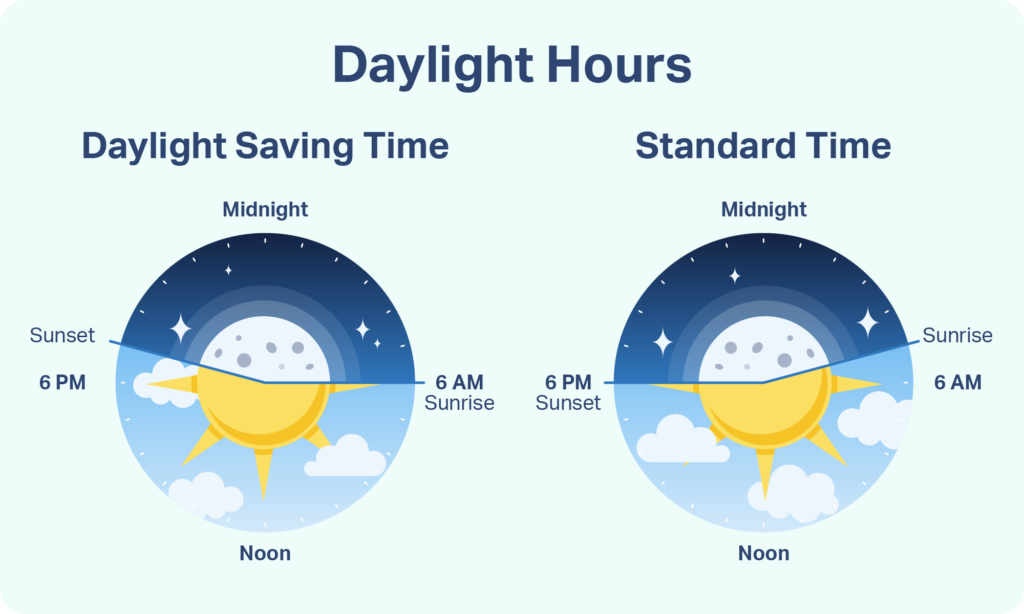
December 21, also known as the winter solstice, has the least amount of sunlight of any day of the year. Beginning on December 22, each day starts getting a little bit longer. As we move farther into the new year, we get a steady uptick in morning light because the sun rises a few minutes earlier each day.
Without DST, we’d continue to benefit from this natural progress of gradually brighter mornings without the abrupt interruption of a clock change in March. We’d have more opportunities to take in daylight in the early part of our day throughout the spring, even if just on the way to work or school.
The exact timing would vary by geographic location, but “people with standard work times would be able to wake up with the sunrise or after sunrise rather than having to wake up in darkness,” says Eva Winnebeck, Ph.D., a senior scientist and expert on sleep-wake rhythms at the Technical University of Munich and the Helmholtz Center Munich in Germany.
During the summer, we’d still get to enjoy the advantages of extra sunlight that go with longer days.
“We have a much longer daylight period in the summer,” which provides ample time for evening activities, Winnebeck says. “The worry that people have is that they miss out on evening daylight, but the sun is up for a long time anyway. It’s not a matter of daylight saving time.”
As summer winds down and fades into the fall, we would again follow the seasons and slowly experience less daylight. During that time, our daily schedule would offer more morning light compared to what we had under DST.
Understanding How Our Bodies Adjust to Light
But what does the amount of daylight we get have to do with our sleep? Can’t we just turn on a lamp and get the light we need?
To answer these questions, we have to consider the three different clocks that mark our days:
- The sun clock comes from planetary movement, which we observe based on the sun’s east-to-west path in the sky. By the sun clock, the midpoint of the day is when the sun is at its highest point overhead.
- The body clock is how our brain and body coordinate and optimize biological functions in a day.
- The social clock is the agreed-upon local time that we see on our watch or phone.
Our body clock has evolved and developed to follow signals from the sun clock, organizing biological processes according to circadian rhythms.
Even on a cloudy day, natural light is many times stronger than artificial light, so it is a crucial driver of our body clock.
Exposure to daylight helps keep the rhythms of our body clock in sync with our environment. This is crucial for good sleep and good health because these rhythms control our cells, muscles, and organs, says Sonia Ancoli-Israel, Ph.D., a researcher and professor at the University of California San Diego.
Despite this, the body clock and its link to the sun clock often go unrecognized.
“Many people may not be aware of the important role circadian rhythms play in maintaining health,” says Kristen Knutson, Ph.D. associate professor of neurology at Northwestern University. “It’s not just a matter of heart health, kidney health, brain health, or any one system. It’s all of the above.”
“Many people may not be aware of the important role circadian rhythms play in maintaining health. It's not just a matter of heart health, kidney health, brain health, or any one system. It's all of the above.” — Kristen Knutson, Northwestern University
Ideally, the social clock, which we use for everything from school times to work hours, would align with our body clock and the sun clock. But daylight saving time throws off that alignment.
“Under daylight saving time, your body is living in the wrong time zone,” says Dr. Elizabeth Klerman, professor of neurology at Massachusetts General Hospital and Harvard Medical School. This mismatch between the body clock and sun clock may detract from good sleep.
“When the exposure to sunlight in the morning is reduced, our biological clocks will drift later and later, making it harder to wake up,” Ancoli-Israel says. On top of that, additional evening light “pushes the biological clock to a later time and makes it more difficult to fall asleep.”
Even though delayed internal clocks from DST cause us to be awake later at night, we usually still have to report to work or get kids to school at the same time in the morning.
This erodes time for necessary rest: “Your alarm clock goes off in the morning, and you haven’t gotten enough sleep,” Dr. Klerman says.
We also may experience other health rewards from establishing a healthy circadian rhythm. Disrupted circadian rhythms can contribute to impaired thinking and immune function as well as heightened risks of diabetes, depression, cardiovascular disease, and other medical conditions.
“Under daylight saving time, your body is living in the wrong time zone.” — Elizabeth Klerman, Massachusetts General Hospital and Harvard Medical School
While abolishing daylight saving time alone would not eliminate these problems, it could help.
“We have a society that is already sleep-deprived,” Winnebeck says. “Giving [us] daylight saving time worsens the whole problem.”
Finding the Right Time
Many Americans prefer doing away with twice-yearly time changes and instead having one fixed time year-round. So why was daylight saving time put in place at all?
Part of it was commerce, with some lobbying groups arguing that it led to more shopping and sports-watching. Another leading initial rationale for daylight saving time was to reduce energy consumption by decreasing the need to have lights on in the evening.
But changes in how we use electricity today may have reduced the energy savings from DST. Only about 6% of the money spent on electricity goes to lighting households after dark. In 2006, the Department of Energy called energy savings from DST “relatively small,” with the National Bureau of Economic Research finding that any gains were offset by added heating and cooling costs .
Daylight saving time itself has been enacted and repealed multiple times in the U.S. since 1918. After a patchwork of state and local time changes emerged in the mid-20th century, Congress passed the Uniform Time Act of 1966 to create a national policy that included DST.
But if the U.S. were to establish a stable, year-round time, which permanent time is the right time? The jury is out on that one.
Arizona and Hawaii already use permanent standard time, as do Puerto Rico, Guam, and the U.S. Virgin Islands. Groups such as the the American Academy of Sleep Medicine and the Sleep Research Society have publicly supported a national policy to abolish daylight saving time.
In contrast, more than a dozen states have passed legislation supporting permanent daylight saving time. Some people like the pattern of daylight that the spring-forward version of a day offers. They see DST as providing a better quality of life with more light in the evening when many people enjoy after-work and after-school activities.
Sleep experts who recommend abolishing daylight saving time in favor of permanent standard time recognize that no policy will make everyone happy. Clock changes remain a hotly contested political issue. Thus remains our current state: having it both ways despite the drawbacks.
How to Prepare for the Time Change
Despite support for abolishing clock changes, most of the U.S. will continue to spring forward and fall back for the foreseeable future. It’s essential to do what we can to prepare for the clock changes as we move from standard time to daylight saving time and vice versa.
Knutson advises people to try to get enough sleep in the nights before we spring forward so that we’re not already sleep-deprived going into the weekend. When the work week starts on Monday for many of us, we should remember that everyone is dealing with the disruptions of the clock change.
“People should have realistic expectations about their productivity and mood, as well as those around them,” Knutson says. “In other words, go easy on yourself and your friends, family, and colleagues.”
Especially if they forget to change the clocks.
References
18 Sources
-
United States Department of Transportation. (2022, September 9). History of Time Zones and Daylight Savings Time., Retrieved September 14, 2023, from
https://www.bts.gov/explore-topics-and-geography/geography/geospatial-portal/history-time-zones-and-daylight-saving -
Monmouth University (March 15, 2022) Few Americans Like Resetting Clocks.
https://www.monmouth.edu/polling-institute/reports/monmouthpoll_us_031522/ -
YouGov Survey. (March 6-92023) Daylight Saving Time., Retrieved September 14, 2023
https://docs.cdn.yougov.com/etwjvohrxx/Daylight_Saving_Time_Toplines_Crosstabs.pdf -
National Conference of State Legislatures. (September 22, 2023). Daylight saving time: State legislation., Retrieved February 28, 2024, from
https://www.ncsl.org/transportation/daylight-saving-time-state-legislation -
S.582 – Sunshine Protection Act of 2023. (n.d.)., Retrieved September 14, 2023, from
https://www.congress.gov/bill/118th-congress/senate-bill/582 -
Barnes, C. M., & Wagner, D. T. (2009). Changing to daylight saving time cuts into sleep and increases workplace injuries. The Journal of applied psychology, 94(5), 1305–1317.
http://doi.apa.org/getdoi.cfm?doi=10.1037/a0015320 -
Watson N. F. (2019). Time to show leadership on the daylight saving time debate. Journal of clinical sleep medicine : JCSM : official publication of the American Academy of Sleep Medicine, 15(6), 815–817.
https://pubmed.ncbi.nlm.nih.gov/31138392/ -
Hafner, Marco, Martin Stepanek, Jirka Taylor, Wendy M. Troxel, and Christian Van Stolk, Why sleep matters — the economic costs of insufficient sleep: A cross-country comparative analysis. Santa Monica, CA: RAND Corporation, 2016., Retrieved September 14, 2023 from
https://www.rand.org/pubs/research_reports/RR1791.html -
American Academy of Sleep Medicine – Association for Sleep Clinicians and Researchers. (2016, March 3). Daylight saving time health advisory. American Academy of Sleep Medicine., Retrieved September 14, 2023, from
https://aasm.org/advocacy/position-statements/daylight-saving-time-health-advisory/ -
Blume, C., Garbazza, C., & Spitschan, M. (2019). Effects of light on human circadian rhythms, sleep and mood. Somnologie : Schlafforschung und Schlafmedizin = Somnology : sleep research and sleep medicine, 23(3), 147–156.
https://pubmed.ncbi.nlm.nih.gov/31534436/ -
Roenneberg, T., Winnebeck, E. C., & Klerman, E. B. (2019). Daylight saving time and artificial time zones: A battle between biological and social times. Frontiers in physiology, 10, 944.
https://pubmed.ncbi.nlm.nih.gov/31447685/ -
Roenneberg, T., Wirz-Justice, A., Skene, D. J., Ancoli-Israel, S., Wright, K. P., Dijk, D. J., Zee, P., Gorman, M. R., Winnebeck, E. C., & Klerman, E. B. (2019). Why should we abolish daylight saving time?. Journal of biological rhythms, 34(3), 227–230.
https://pubmed.ncbi.nlm.nih.gov/31170882/ -
Evans, J. A., & Davidson, A. J. (2013). Health consequences of circadian disruption in humans and animal models. Progress in molecular biology and translational science, 119, 283–323.
https://linkinghub.elsevier.com/retrieve/pii/B9780123969712000105 -
Zhang, H., Dahlen, T., Khan, A., Edgren, G., & Rzhetsky, A. (2020). Measurable health effects associated with the daylight saving time shift. PLoS Computational Biology, 16(6), e1007927.
https://pubmed.ncbi.nlm.nih.gov/32511231/ -
Cook, B. Congressional Research Service (2016, March 9) Daylight Saving Time., Retrieved September 14, 2023 from
https://sgp.fas.org/crs/misc/R44411.pdf -
Kotchen, M, Grant, L, (October 2008) Does Daylight Saving Time Save Energy? National Bureau of Economic Research., Retrieved September 14, 2023 from
https://www.nber.org/system/files/working_papers/w14429/w14429.pdf -
Rishi, M. A., Ahmed, O., Barrantes Perez, J. H., Berneking, M., Dombrowsky, J., Flynn-Evans, E. E., Santiago, V., Sullivan, S. S., Upender, R., Yuen, K., Abbasi-Feinberg, F., Aurora, R. N., Carden, K. A., Kirsch, D. B., Kristo, D. A., Malhotra, R. K., Martin, J. L., Olson, E. J., Ramar, K., Rosen, C. L., … Gurubhagavatula, I. (2020). Daylight saving time: an American Academy of Sleep Medicine position statement. Journal of clinical sleep medicine : JCSM : official publication of the American Academy of Sleep Medicine, 16(10), 1781–1784.
https://pubmed.ncbi.nlm.nih.gov/32844740/ -
Malow B. A. (2022). It is time to abolish the clock change and adopt permanent standard time in the United States: a Sleep Research Society position statement. Sleep, 45(12), zsac236.
https://academic.oup.com/sleep/article/45/12/zsac236/6717940


